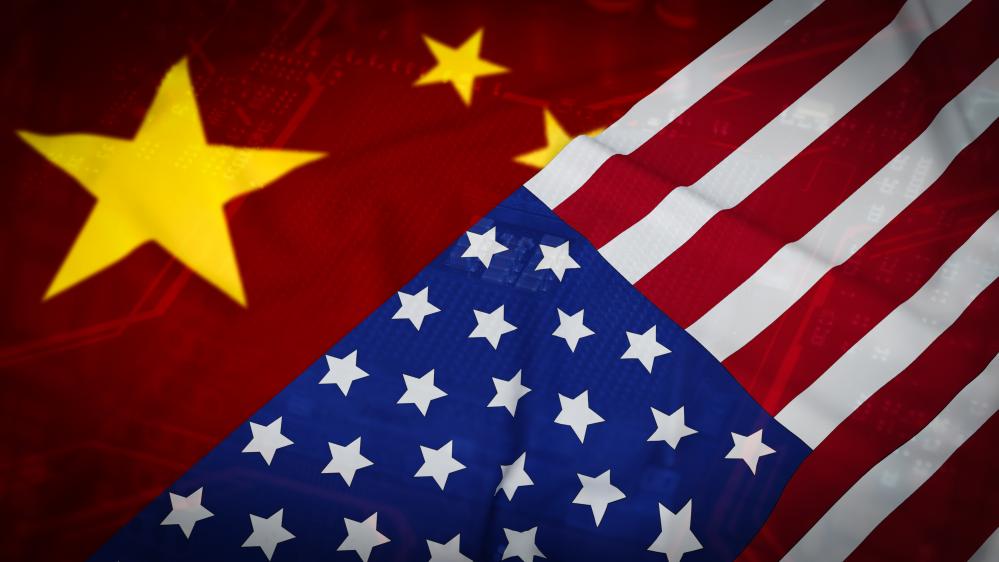
The Impact of China Tariffs on California
The imposition of tariffs on imports from China holds substantial implications for California’s economy, given its status as a major hub for trade with Asia. The state’s ports, including Los Angeles and Long Beach, are critical entry points for goods entering the United States. Tariffs can lead to increased costs, which businesses often pass on to consumers, affecting the cost of living in California, already among the highest in the nation.
California’s economy relies heavily on trade, and any disruption can ripple through various sectors, from technology to agriculture. The prospect of tariffs can also lead to preemptive import surges as businesses attempt to stockpile goods before tariffs take effect, altering normal supply chain dynamics.
From agriculture to manufacturing, the impact of tariffs is far-reaching, potentially affecting thousands of jobs and leading to increased prices for end consumers. With imports from China accounting for a significant portion of California’s trade volume, any tariffs could have disproportionate effects compared to other states.
California Supply Chain Challenges
Tariffs present unique challenges to California’s robust and diverse supply chain. The state’s strategic geographic location has made it a central node for international trade, primarily through its major ports. Increased tariffs can lead to significant bottlenecks, with Long Beach and Los Angeles ports seeing a surge in short-term activity as businesses rush to import goods before new tariffs take effect.
Companies may face increased costs and delays, impacting their ability to maintain inventory levels. This scenario can lead to a temporary spike in employment as businesses hire more workers to meet increased demands at ports and warehouses. However, these effects may be short-lived as the actual implementation of tariffs could reduce trade volume over time.
Strategies for Navigating Tariffs
Businesses operating in California are compelled to develop innovative strategies to mitigate the impact of tariffs. Effective tariff management often includes diversifying supply chains, renegotiating supplier contracts, and exploring alternative sourcing destinations outside China.
Some companies are considering increasing production within the United States to bypass tariffs entirely. This adjustment strategy requires a detailed cost-benefit analysis to ensure that domestic production can meet demand efficiently without significantly raising prices for consumers.
Collaborating with partners like Altraco, which has extensive experience in managing offshore manufacturing and navigating tariffs, can be beneficial. Leveraging their expertise allows businesses to optimize supply chains and mitigate costs effectively.
Another approach involves strategic stockpiling before tariff implementations. While this can provide temporary relief, businesses must carefully manage inventory levels to avoid tying up too much capital in unsold goods.
Tariffs and Manufacturing Costs
For manufacturers, tariffs add an additional layer of complexity to cost structures. These can lead to increased prices for raw materials and components often imported from abroad. California manufacturers may be particularly affected due to the state’s role as a production hub for high-tech equipment and consumer electronics.
Companies like Altraco have been adapting to these shifts by leveraging their global manufacturing networks. By diversifying production locations to countries without tariff impositions, Altraco helps clients maintain competitive pricing while minimizing supply chain disruptions.
- Relocating production to tariff-exempt countries.
- Enhancing operational efficiency to offset increased material costs.
- Investing in automation to reduce labor costs domestically.
Agricultural Sector Concerns
California’s agricultural sector, a significant component of the state’s economy, faces distinct challenges from tariffs. Products like almonds, wine, and dairy are prominent exports and susceptible to retaliatory tariffs from China. This situation can lead to decreased market access and falling revenues for farmers.
During previous tariff hikes, products such as almonds experienced notable price declines, which had a cascading impact on the industry. To mitigate these effects, agricultural producers might need to explore new markets or increase domestic sales efforts. Additionally, they may need to invest in new technologies to enhance yield and reduce production costs.
Cooperative efforts with government agencies and trade organizations can also aid in securing more favorable trade terms and promoting California agricultural products globally, helping to counteract the negative effects of tariffs.
The Role of Technology in Mitigation
Technology can play a crucial role in navigating the challenges posed by tariffs. Advanced data analytics can help businesses predict tariff impacts and optimize supply chains accordingly. By using predictive modeling, companies can simulate various scenarios and develop proactive strategies to manage tariff-related disruptions.
Incorporating technology into logistics management ensures a more agile response to import tariffs. Tools such as real-time tracking and AI-driven supply chain platforms enable businesses to make informed decisions quickly, reducing potential delays and cost increases.
Additionally, the rise of Industry 4.0 technologies presents opportunities for California manufacturers to enhance efficiency, making them less vulnerable to external economic pressures such as tariffs. These technologies include IoT devices, machine learning, and blockchain for greater transparency and efficiency in operations.
Partnering with experienced firms like Altraco can further facilitate technological integration, providing companies with the necessary tools and expertise to innovate and adapt in a tariff-sensitive environment.
Potential Benefits and Opportunities
While tariffs pose challenges, they may also present opportunities, particularly for companies focused on domestic production and innovation. For California manufacturers, this could mean increased demand for locally made products as businesses and consumers seek to avoid tariff-associated price hikes.
There is potential for growth in sectors such as renewable energy and advanced manufacturing, where California already has competitive advantages. Diversifying markets and exploring untapped customer bases can bolster resilience against tariff-induced economic fluctuations.
Innovation can also accelerate in response to tariffs, promoting research and development initiatives. This endeavor could lead to new, efficient manufacturing processes, creating more sustainable business practices and reducing reliance on imports.
The Human Impact of Tariffs
Tariffs extend beyond financial implications; their effects are deeply felt at the human level. Increased costs of goods and services can strain household budgets, affecting the standard of living. Simultaneously, businesses may face tough decisions regarding layoffs or downsizing as they strive to maintain profitability.
Personal anecdotes from industry professionals, including those at Altraco, underscore the real-world challenges faced by businesses during tariff hikes. These stories emphasize the importance of strategic planning and the need for robust contingency measures to protect employees and sustain operations.
Community support and government assistance can provide temporary relief, yet long-term solutions will require collaborative efforts between businesses, policymakers, and trade organizations to resolve underlying trade tensions and create stable economic environments.
Conclusion and Future Directions
In the evolving landscape of international trade, California remains a key player, influencing and being influenced by changes such as the China Tariff California dynamics. Companies like Altraco exemplify how strategic adaptation can mitigate negative impacts and even reveal new opportunities for growth and innovation.
As the trade environment continues to shift, businesses must remain agile, leveraging partnerships and technology to navigate uncertainties. With the right strategies in place, California can continue to thrive as an economic powerhouse amid changing tariff conditions.

Is there a tariff from China to USA?
Yes, there are tariffs imposed by the United States on a wide range of goods imported from China. These tariffs have been a significant part of the trade tensions between the two countries. The U.S. government initially introduced these tariffs to address concerns over trade imbalances, intellectual property theft, and other trade practices. These tariffs increase the cost of importing goods from China, which can affect businesses and consumers alike. Given these challenges, companies, especially those based in trade hubs like California, need to strategize effectively. For example, at Altraco, we help businesses manage these tariffs by diversifying sourcing locations and leveraging our global manufacturing network, ensuring that cost-effectiveness is maintained despite these additional costs.
When did the 25% China tariff go into effect?
The 25% tariff on certain Chinese goods was implemented in several stages, starting in 2018. The most notable wave began in July 2018, as part of a broader strategy by the Trump Administration to address trade imbalances and push for fairer trade practices. These tariffs initially covered about $34 billion worth of Chinese imports, with subsequent rounds raising the total to around $250 billion. Such measures have prompted many companies to rethink their supply chains. At Altraco, we work closely with our clients to navigate these challenges, often exploring alternative manufacturing locations and optimizing supply chain strategies to mitigate the impact of such tariffs.
Who benefits from tariffs?
While tariffs can create challenges for some, they do provide certain benefits. For instance, they can protect domestic industries by making imported goods more expensive and less competitive than locally produced alternatives. This protection can encourage domestic production and potentially lead to job creation in certain sectors. However, the reality is nuanced, and the benefits can vary widely across different industries and sectors. Companies, like those partnering with Altraco, often turn to expert manufacturing partners to balance these effects, using strategies like reshoring or identifying tariff-free zones to optimize production and maintain competitive pricing.
Why did Trump start a trade war with China?
The trade war initiated by President Trump in 2018 was largely fueled by the desire to address several longstanding issues in the U.S.-China trade relationship. These issues included the U.S. trade deficit with China, allegations of intellectual property theft, and policies that were seen as unfair to U.S. businesses. The administration aimed to negotiate better terms and sought to pressure China into changing its trade practices. In this complex landscape, companies like Altraco thrived by providing strategic insights into offshore manufacturing, helping businesses adapt to shifting trade policies without sacrificing supply chain efficiency or cost-effectiveness.
How can California businesses mitigate the impact of China tariffs?
California businesses have several strategies available to mitigate the impact of China tariffs. One approach is diversifying supply chains to reduce reliance on Chinese suppliers. Exploring alternative sourcing destinations and increasing local production are also viable options, albeit with careful cost-benefit evaluation. At Altraco, we assist many businesses with these strategies, offering expertise in managing offshore manufacturing and navigating tariffs effectively. We recommend a combination of strategic stockpiling, renegotiating supplier contracts, and leveraging technology to improve supply chain agility and efficiency. By applying these tactics, businesses can better manage costs and minimize disruptions.
What opportunities arise for California manufacturers amid tariffs?
Tariffs can spur new opportunities for California manufacturers by increasing demand for domestically produced goods, as buyers seek to avoid tariff-related price hikes on imports. Sectors like renewable energy and advanced manufacturing, where California holds competitive advantages, may see growth as a result. At Altraco, we advise leveraging this demand increase to invest in innovation, diversifying customer bases, and enhancing production capabilities. The shift towards more sustainable business practices presents an additional opportunity, encouraging manufacturers to explore efficient production processes that might offset import dependencies and reduce environmental impact.
Resources
- California Chamber of Commerce – The California Chamber of Commerce provides valuable resources and information for businesses operating in California.
- California Department of Food and Agriculture – The California Department of Food and Agriculture offers insights and data on the state’s agricultural sector.
- California Manufacturing Technology Consulting – California Manufacturing Technology Consulting offers support and guidance to California manufacturers.
- U.S. International Trade Commission – The U.S. International Trade Commission provides reports and analysis on trade policies and their impacts.
- U.S. Department of Agriculture – The U.S. Department of Agriculture offers information on agricultural policies and programs.

